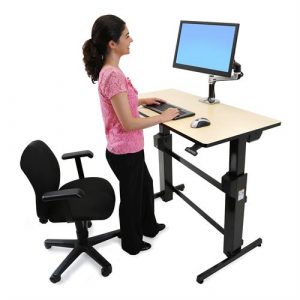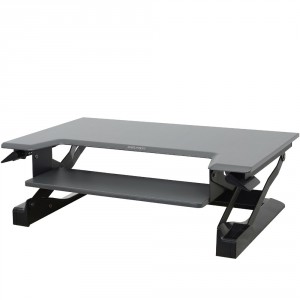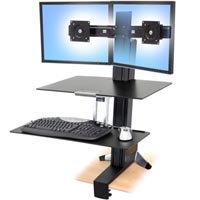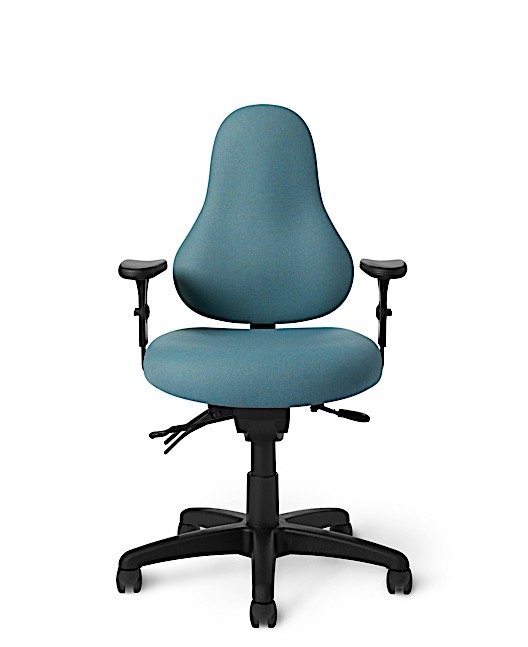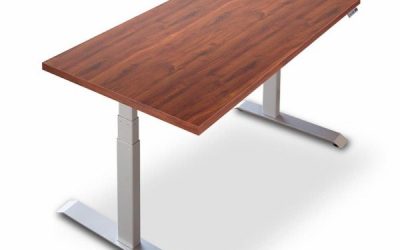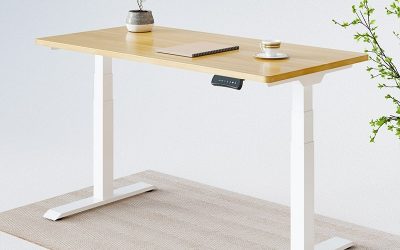Part II – Standing Desks
In Part II of office ergonomics, we’ll examine Sit-stand desks. Read about ergonomic chairs in Part I.
A: A sit-stand desk is any desk that allows the user to change position from sitting to standing while working on the computer. An ideal sit-stand desk provides full adjustability for every body type. It moves up and down so that users can sit and type comfortably or stand up and type comfortably while maintaining perfect ergonomic posture.
Note: The term “standing desk” is also widely used, and refers to desk converters or standing workstations, and vertically adjustable desks.
Q: Why use a sit-stand desk?
A: According to a recent study by NASA, workers are advised to change from sitting to standing and vice versa every 20 minutes to improve lifelong health. Standing too long can be just as bad for the body as sitting too long.
Q: How are desks made today?
A: Most standard non-adjustable (fixed) desks have an average height of 28”-30”. According to the United States Department of Health and Human Services statistics, average male height in the U.S. is 5’10” and average female height is 5’4″. Unfortunately, standard, non-adjustable desks are only an ideal height for users who are 5’8”- 5’10” tall. Users who are shorter or taller will eventually develop aches and pains in their wrists, forearms, shoulders and neck.
Therefore, a 5’4” computer user will have a hard time keeping their elbow in an ergonomic position (90-100 degree angle) if their keyboard is on top of their desk. To fix this, they would need to elevate their chair and add a footrest, or add a keyboard tray under their desk.
However, when they changed positions to stand, their desk set up would no longer be ergonomically correct.
Q: What different types of sit-stand desks are available on the market today?
A: Electric desks – At the press of a button, an electric motor raises or lowers the desk. Generally these desks move 22”-48” off the ground.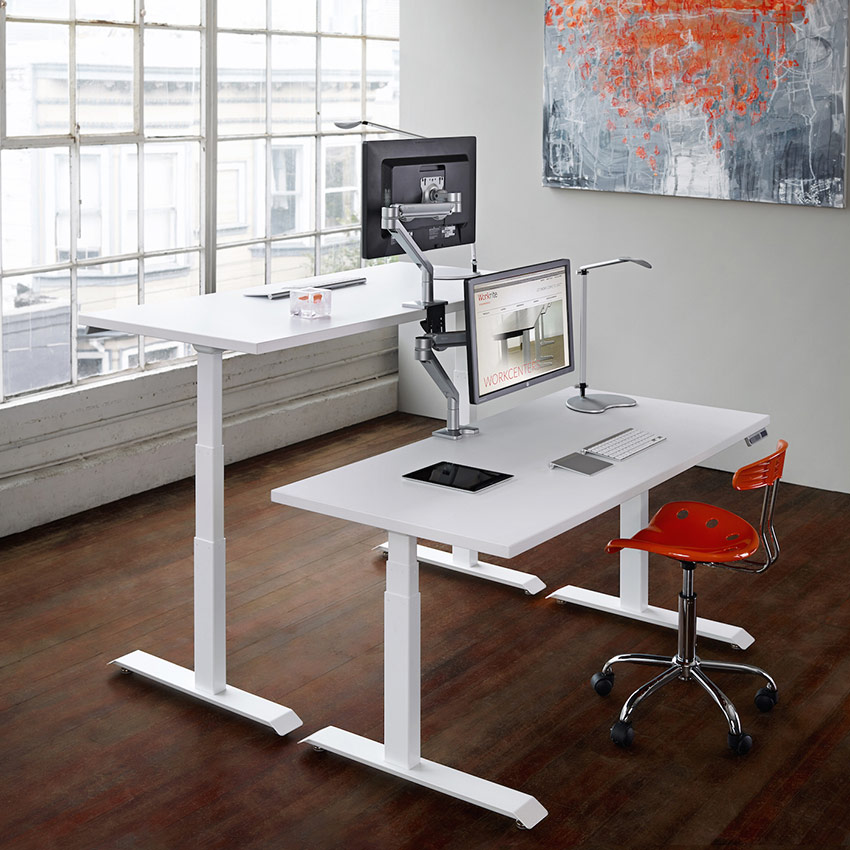
A: Pneumatic desks – By pushing a lever, the desk is elevated or lowered.These desks are more environmentally friendly since they are not electric. However they do require a physical push to lower the desktop. Most pneumatic desks move 30″-50″ from the ground.
A: Crank desks – Turning a crank moves the desk up or down, usually 5 turns for every inch of vertical adjustment. These desks are least practical because of the time required to make adjustments. But they can be useful for a family home or school to adjust desk height over time as children grow.
A: Desk Converters – Converters or workstations convert a traditional desk to a standing desk. Some converters come completely assembled, and others need to be installed on a desktop.
Please send us an email or visit our website for more information about sit-stand desks.

